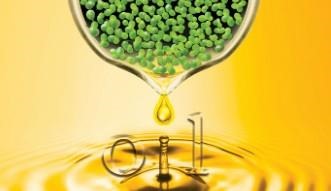Dahir Haret is a 36-year-old farmer from Fafi Sub-County in Garissa County. Like most areas in Northern Kenya, Fafi experiences limited access to clean drinking water, poor infrastructure, incidences of insecurity, and perennial droughts.
With dwindling natural resources, Dahir diversified his income from livestock rearing to include farming. In 2014, Dahir and his family established Kamuthe Young Famers, a self-help group and family farm, utilizing a portion of their 120-acre family land.
With time, small and medium enterprises (SMEs) in the area realized the glaring gap in animal feed, especially during periods of drought. Kamuthe diversified its crops to grow commercial fodder to sell to pastoralists during drier periods and high-quality fodder seeds to sell to other farmers interested in starting fodder production.

Dahir Haret, managing director of Kamuthe Young Farmers
To fully integrate fodder production into its operations, Kamuthe approached the Feed the Future Kenya Livestock Market Systems Activity for support. Using a US$149,580 grant against a cost share of US$21,980, the SME constructed a modern hay barn, installed a solar-powered water pump for irrigation, and procured a tractor with a trailer, and hay baler, plow rake, and mower.
Currently, the farm cultivates 10 acres of fruit trees and 40 acres of Boma rods, Cenchrus Ciliaris, and Brachiaria grass. The latter are climate-smart grass varieties with high productivity under intense conditions, increased soil fertility tolerance, and relative freedom from pests and diseases.
“The support we have received from [the Activity] has transformed our business, the locality of Kamuthe, and the county. We no longer buy diesel for the generator, which would have been too expensive to maintain at the current prices. The solar-powered pump functions 12 hours a day, keeping us in business and profitable.”
–DAHIR HARET, MANAGING DIRECTOR, KAMUTHE YOUNG FARMERS
The SME employs five full-time staff and contracts two laborers, depending on the workload. It makes hay harvest every two to three months and sells each bale of hay for between US$3 and US$4 at the market. During this dry spate, 500 households have depended on fodder from Kamuthe to keep their livestock alive. For a subsidized price, the farm allocates plots to farmers who harvest feed and carry it to their animals, conserving the energy their animals would have spent walking. This has increased herd survival compared to losses during previous droughts.
Because of the farm’s affordable and sustainable production, the county government and the Kenya Agricultural Livestock and Research Organization use the farm as a model and demonstration site. It is also a fodder seed multiplication center supporting farmers interested in venturing into commercial fodder production.
Click here to see more...